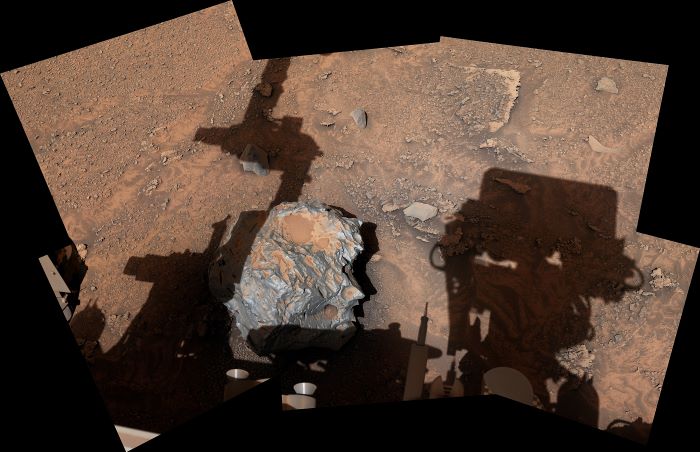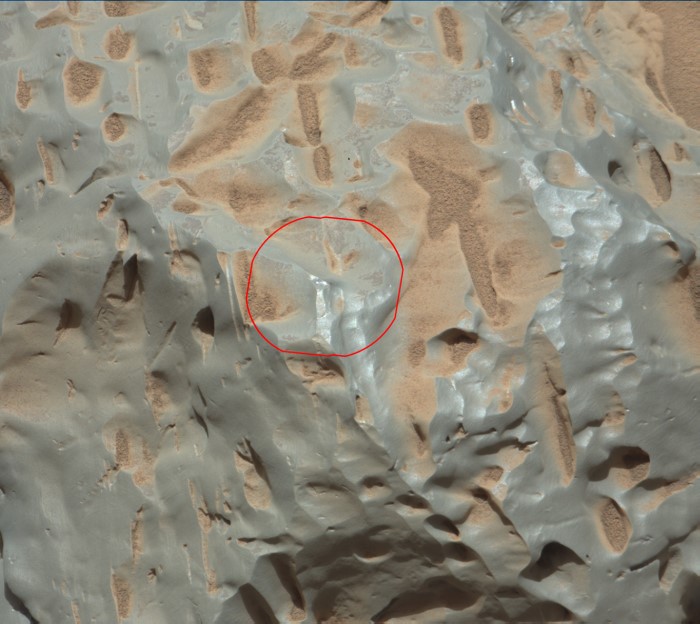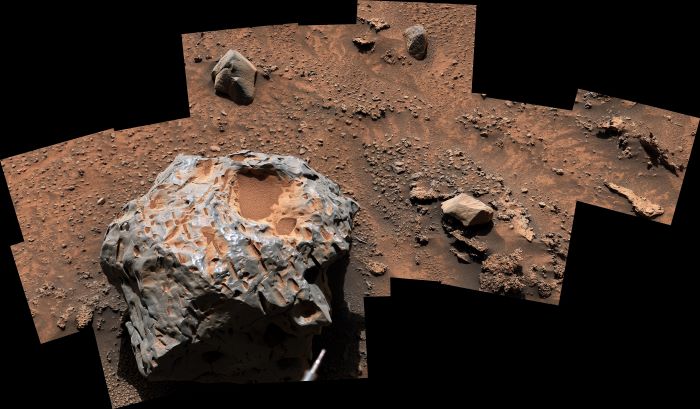The surface of Mars is the very definition of a desert.
Dry, desolate, covered by mile after mile of fine red dust.
That doesn't make it any less worth exploring. Learning about Mars can tell us so much about how planets evolve—especially when science suggests that Mars once looked a lot more like Earth, full of lakes and rivers.
Mars' desert features mean that when something doesn't match the surroundings, it really sticks out.
Take for example, a metal meteorite that was recently found by the rover Curiosity. Nicknamed Cacao, this 30 cm (1 ft.) long rock is made mostly of a combination of nickel and iron.
And like Curiosity itself, it came to Mars through space!
Similar, but very different

You can see the shadow of the rover Curiosity in this picture of Cacao. (NASA/JPL-CalTech)
Mars is actually full of rock made of nickel and iron. But much of this has rusted due to a process called oxidation. That is what gives 'The Red Planet' its famous colour.
Cacao, on the other hand is dark grey and very smooth. This finish is thanks to its journey through the Martian atmosphere and is a tell-tale sign that it came from off the planet.
When a rock passes through an atmosphere at high speeds (even an atmosphere as thin as Mars'), the friction sands and polishes the rock's surface. This gives the rock a distinct finish that looks like it was buffed to a beautiful shine!
It also gives the rock a series of pits and grooves known as regmaglypts. These are areas where small chunks of the meteor were stripped clean off the surface by the high heat and friction. Wow!
An ancient piece of rock

This circled area shows where Curiosity used a laser to vaporize a corner of Cacao for analysis. (NASA/JPL-CalTech)
Maybe most exciting about this metal meteorite is how old it probably is. Though we can't say exactly when Cacao arrived on Mars, it was likely formed several billions of years ago. Back then, it would've been a part of smallish asteroid-sized chunk of metal called a planetesimal.
At the start of the solar system, there were millions upon millions of these planetesimals. In some cases, many of these collected together, like seeds of a planet, joining to eventually form the worlds that we know today.
But at the same time, others collided at high speeds with other asteroids and were shattered and scattered into the void. Left to wander space, until they finally landed to rest on a new world.
In Cacao's case, Mars!
What a curious story of a truly ancient rock. Just the kind of tale that you would expect a rover named Curiosity to bring to us!
 The metal meteorite has been nicknamed Cacao, but don't try making chocolate of it! (NASA/JPL-CalTech)
The metal meteorite has been nicknamed Cacao, but don't try making chocolate of it! (NASA/JPL-CalTech)









